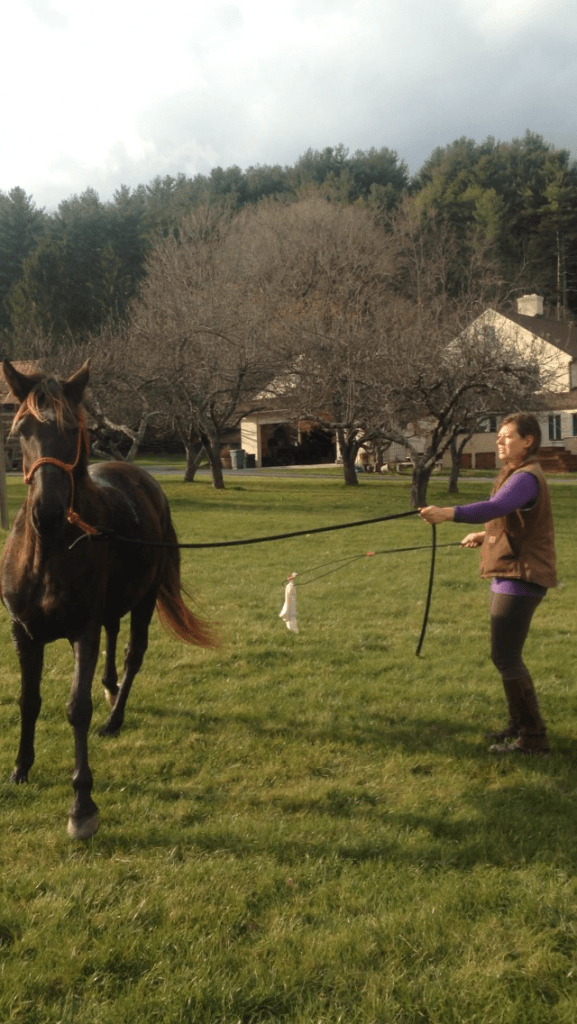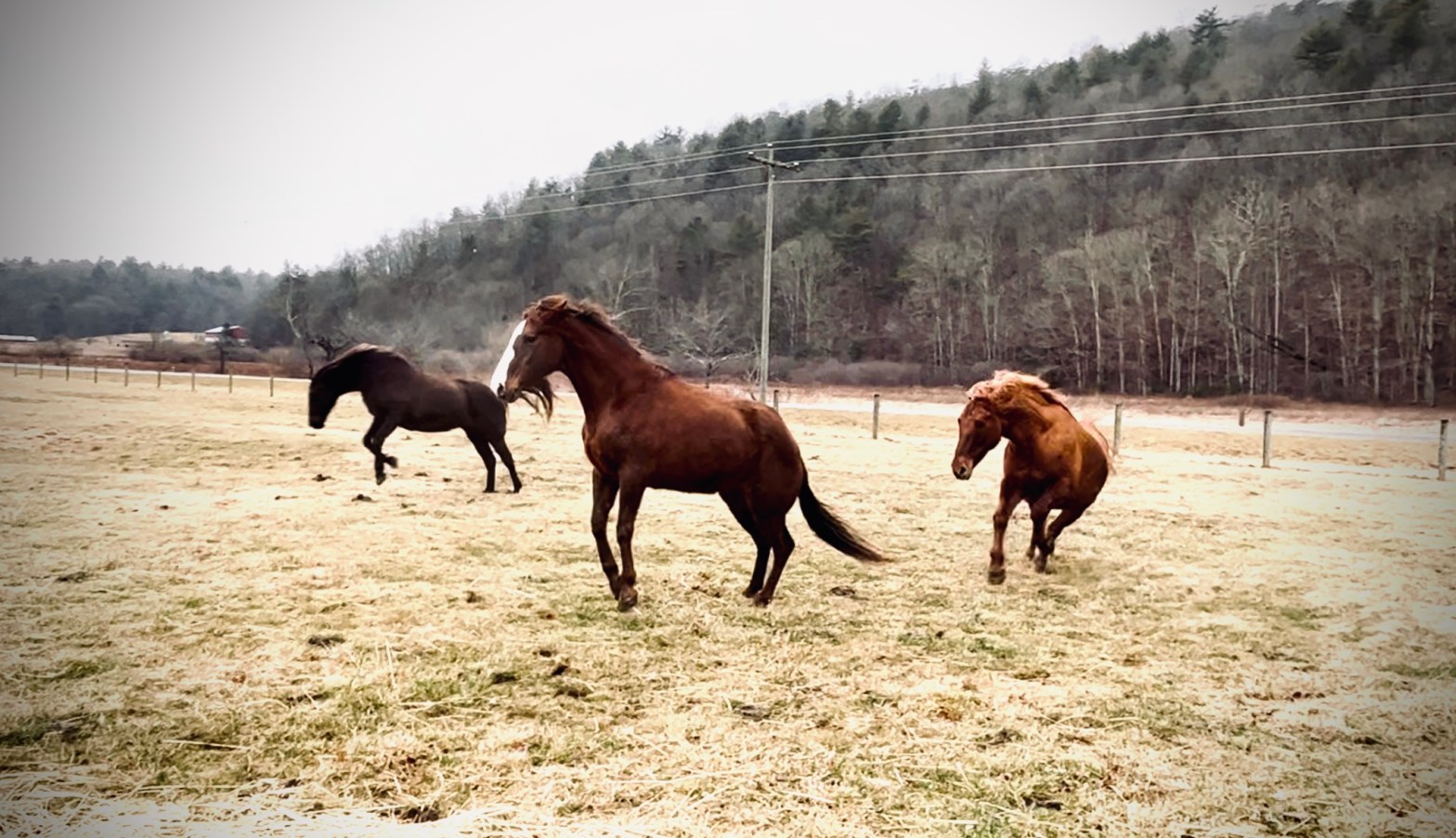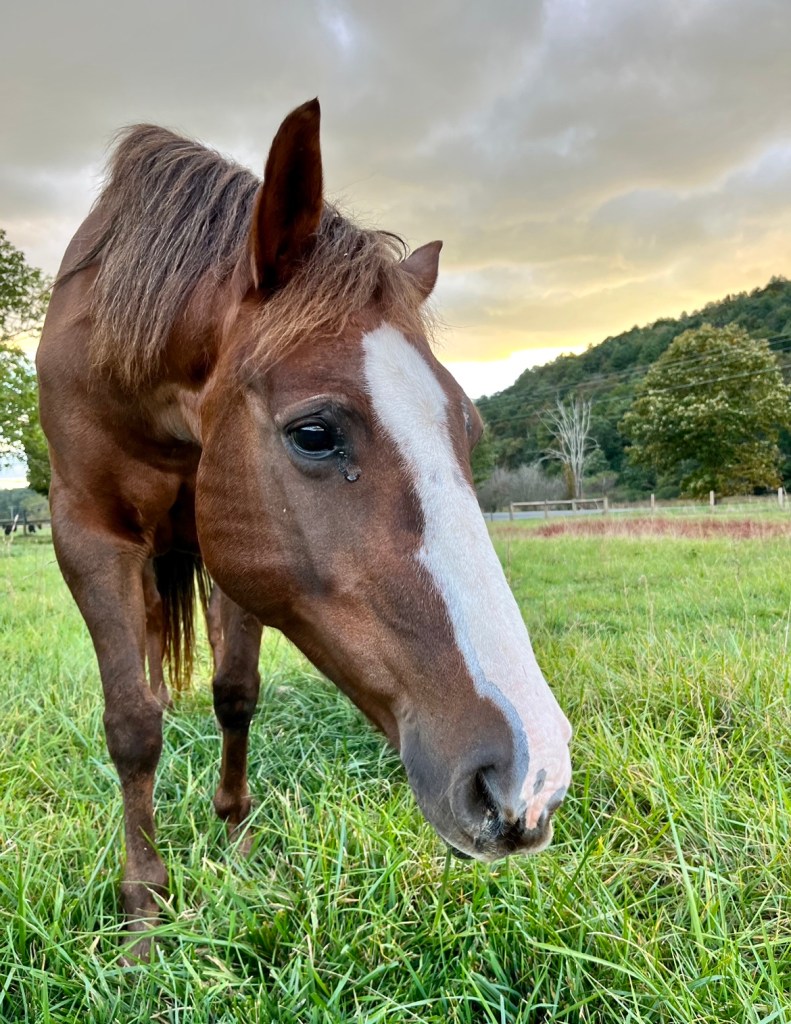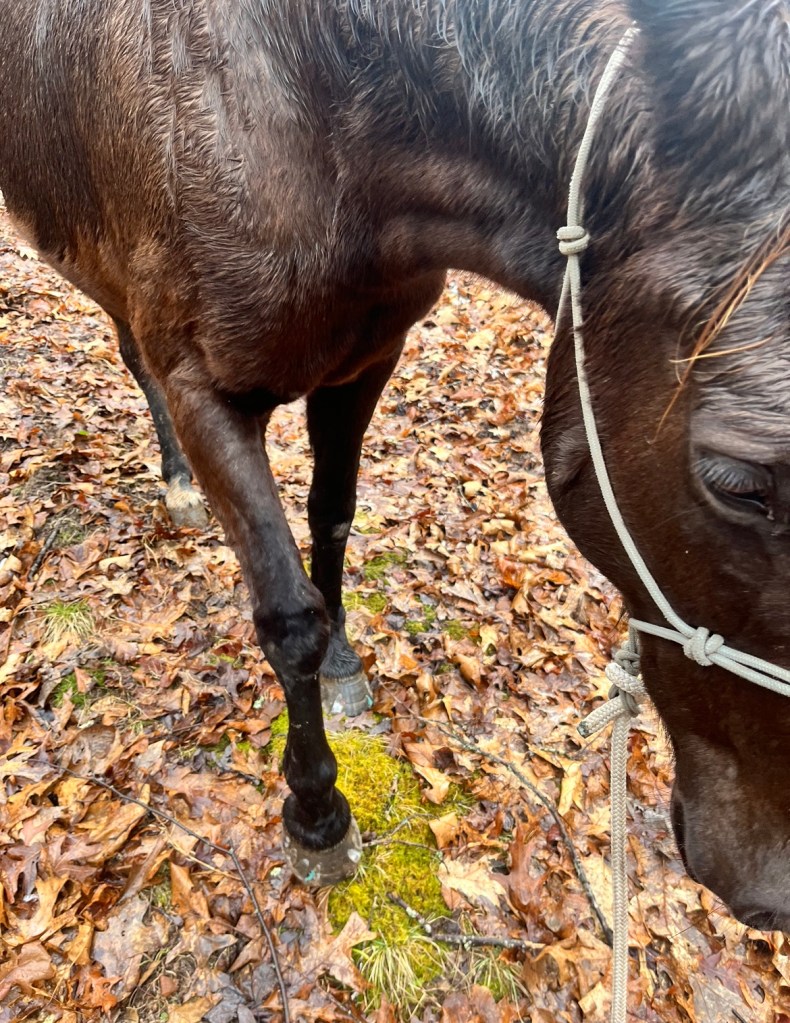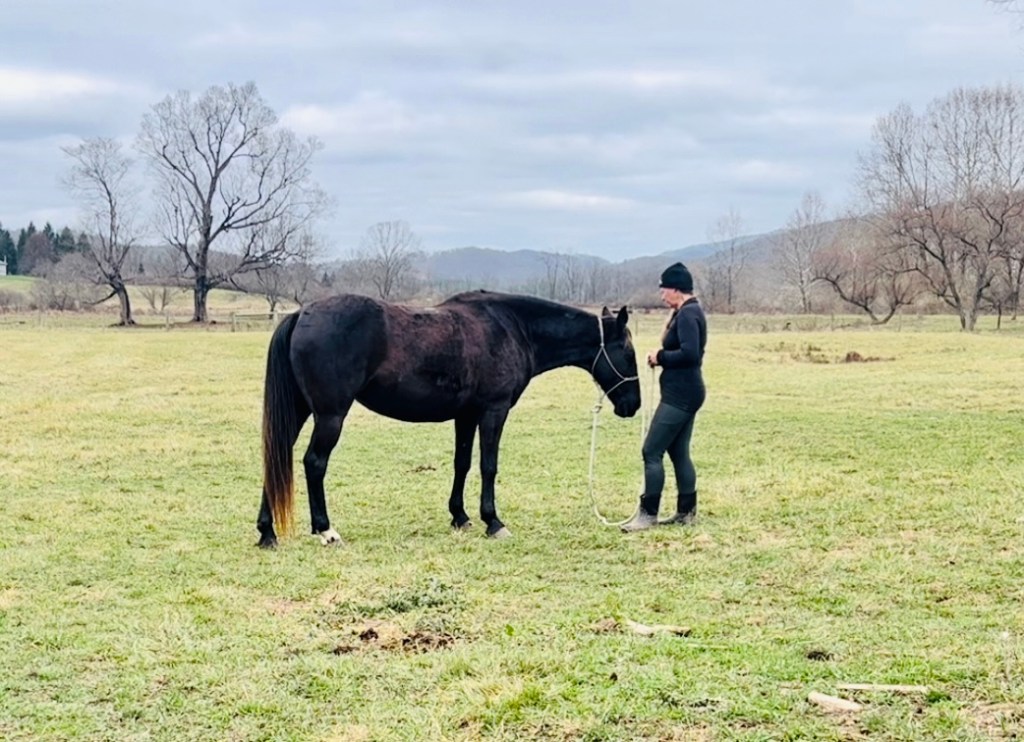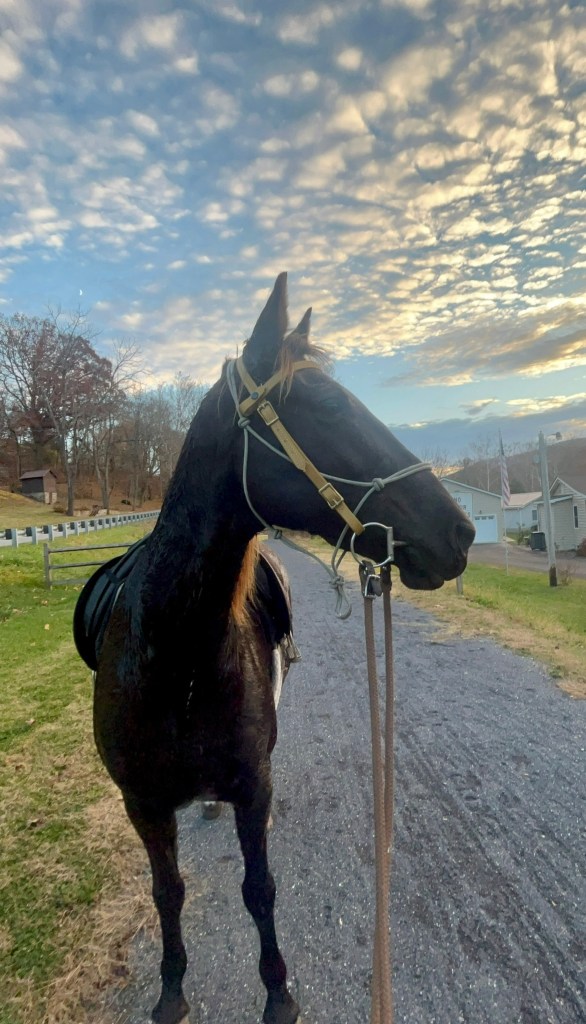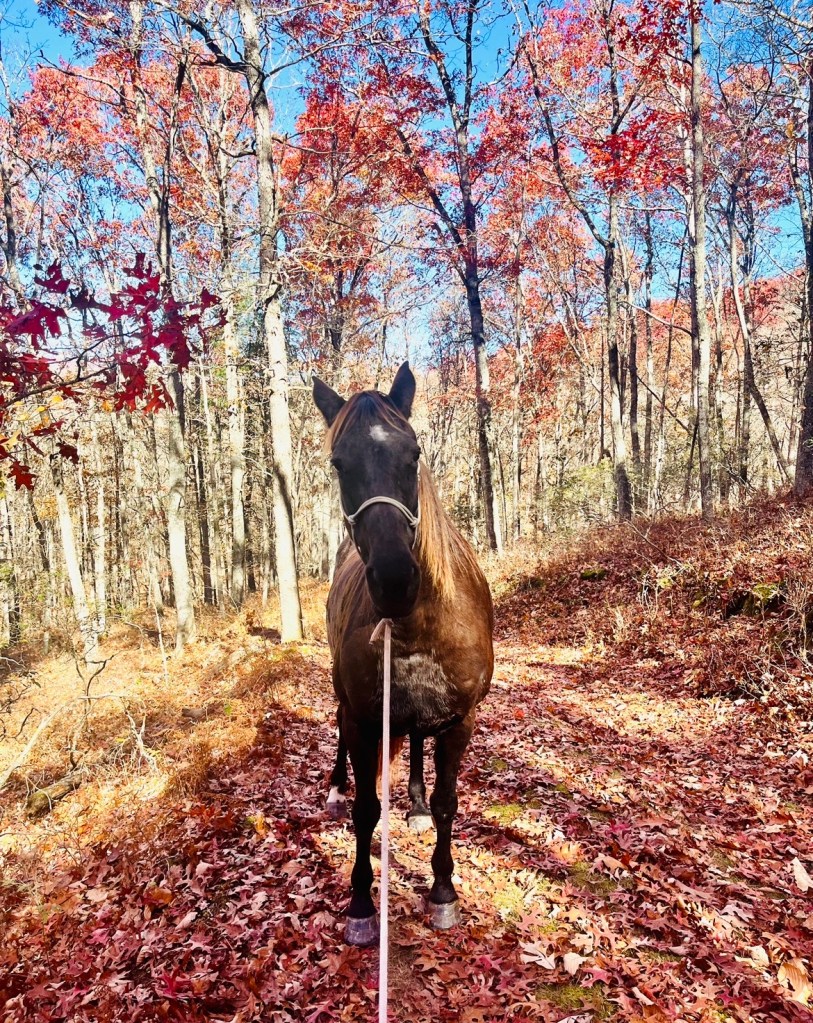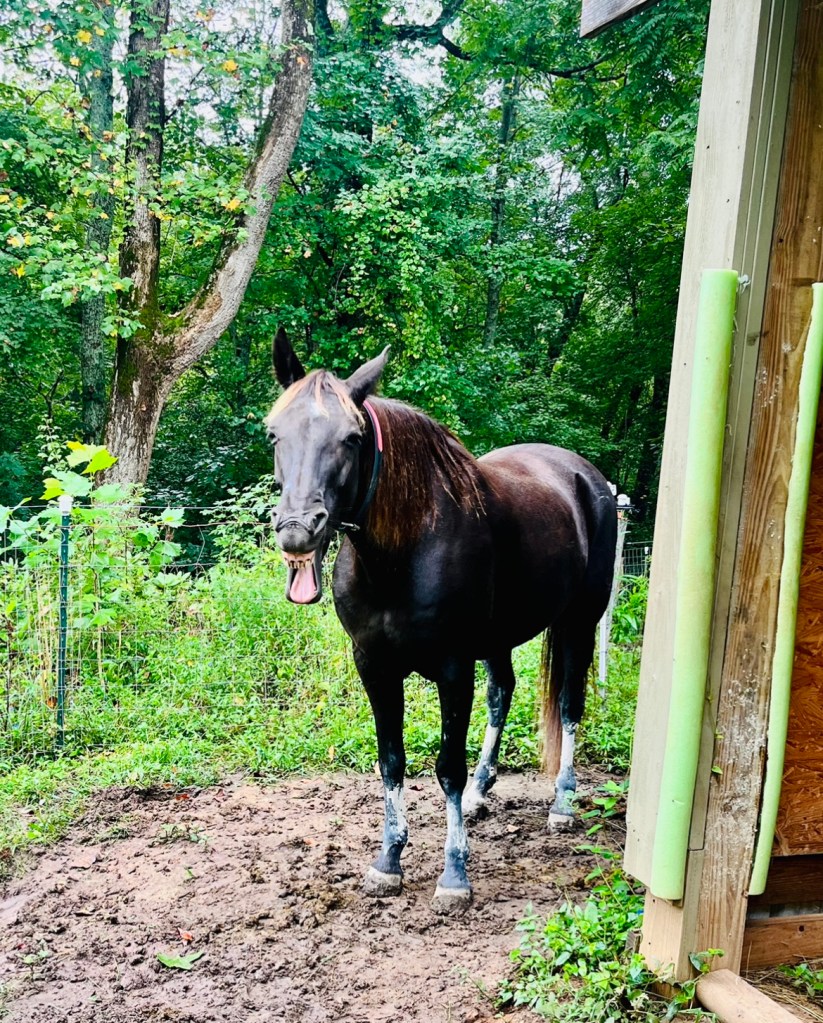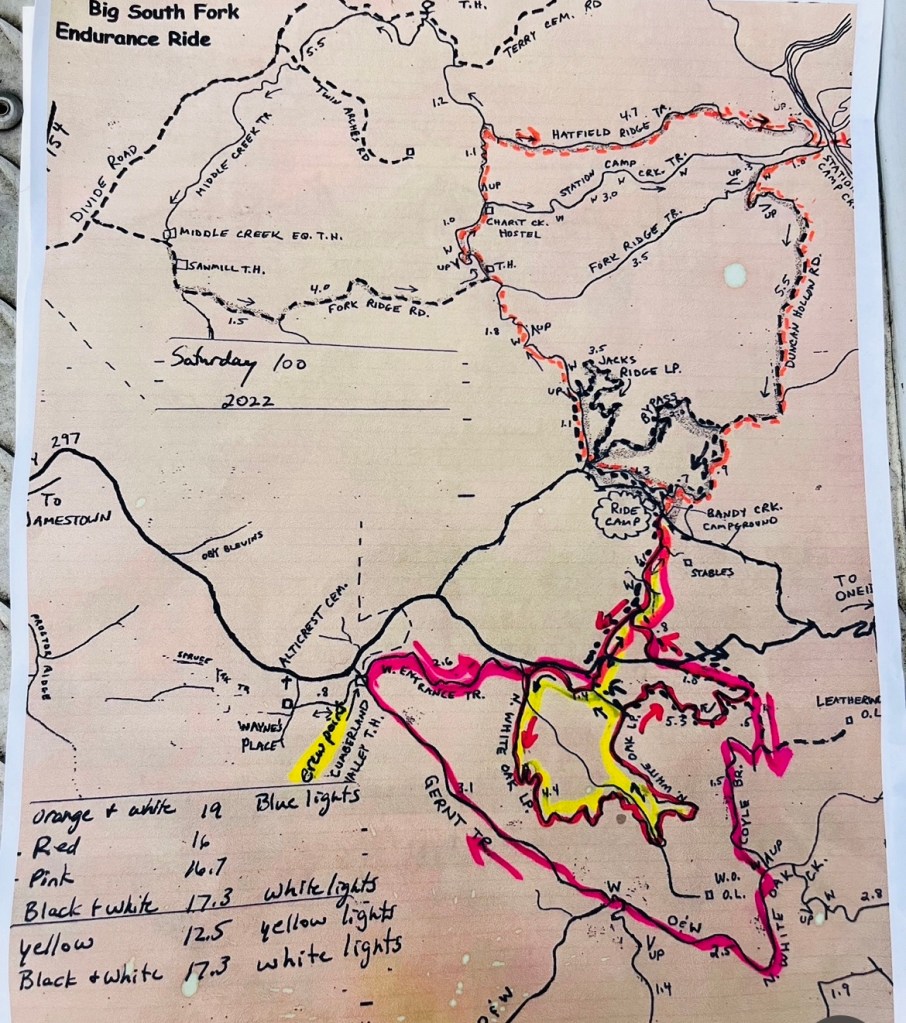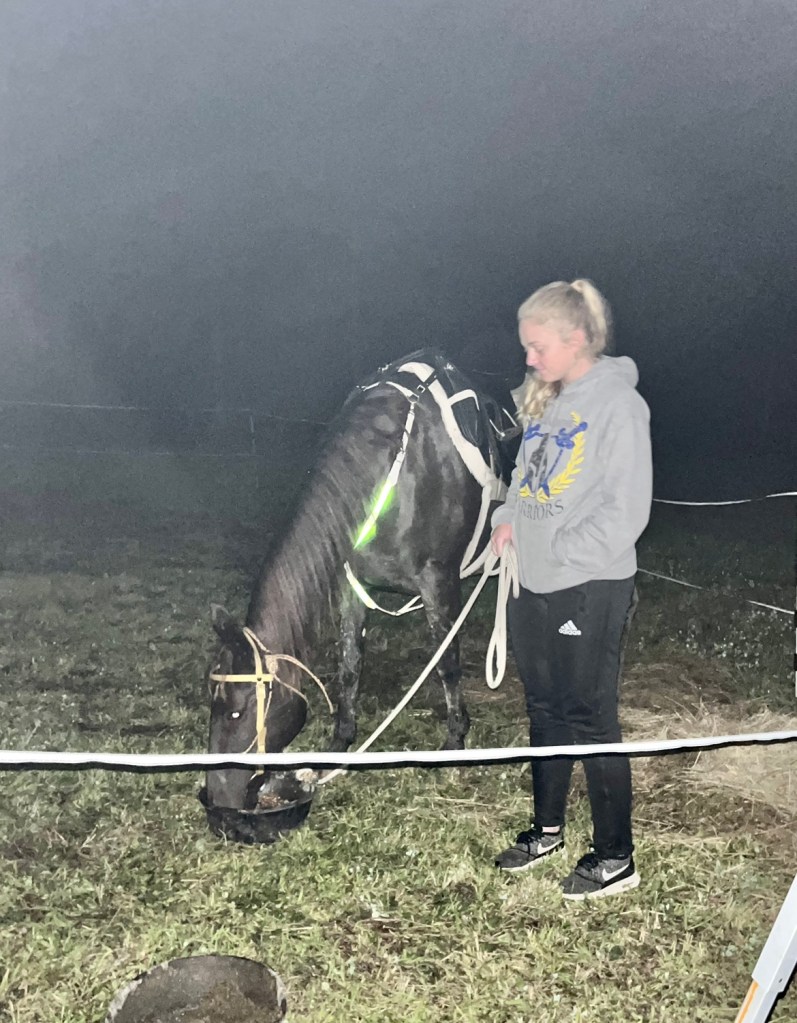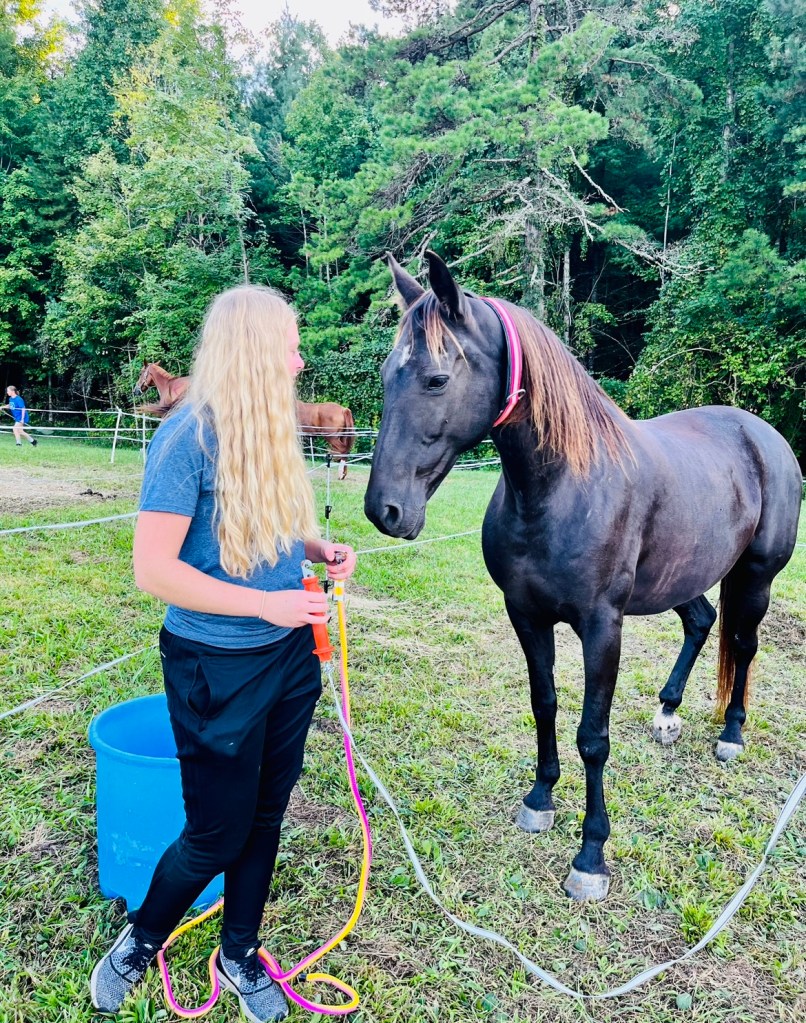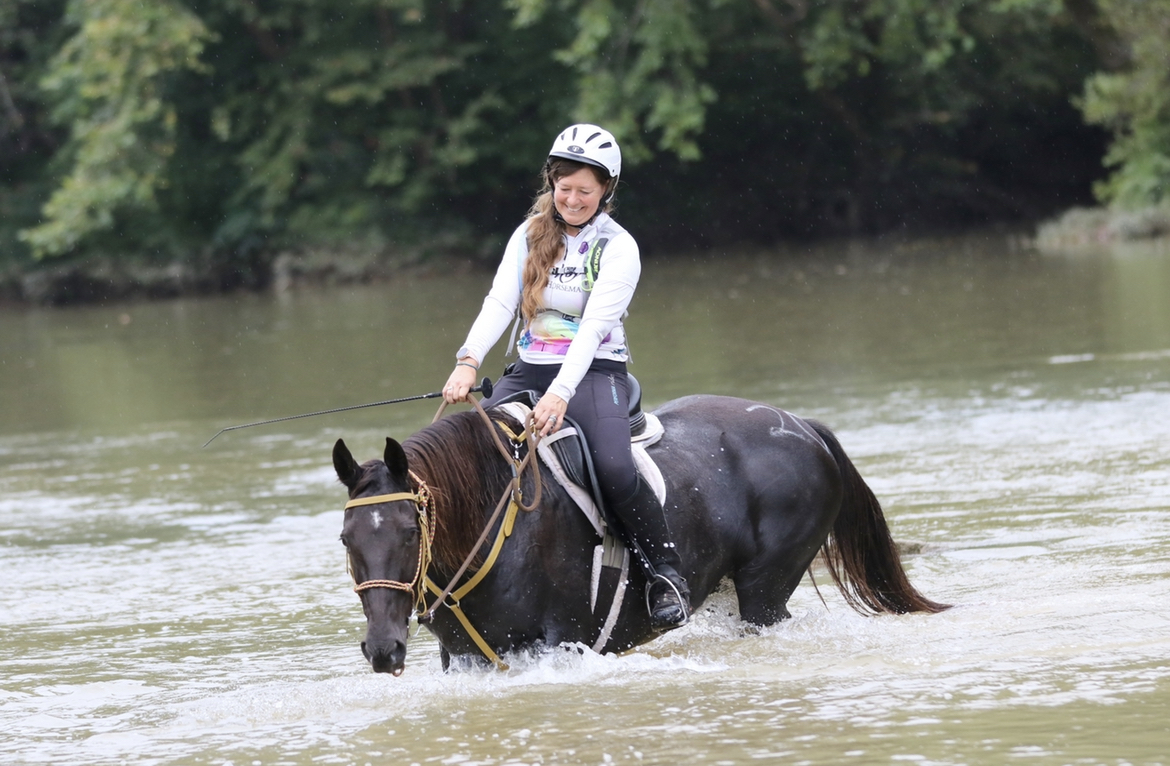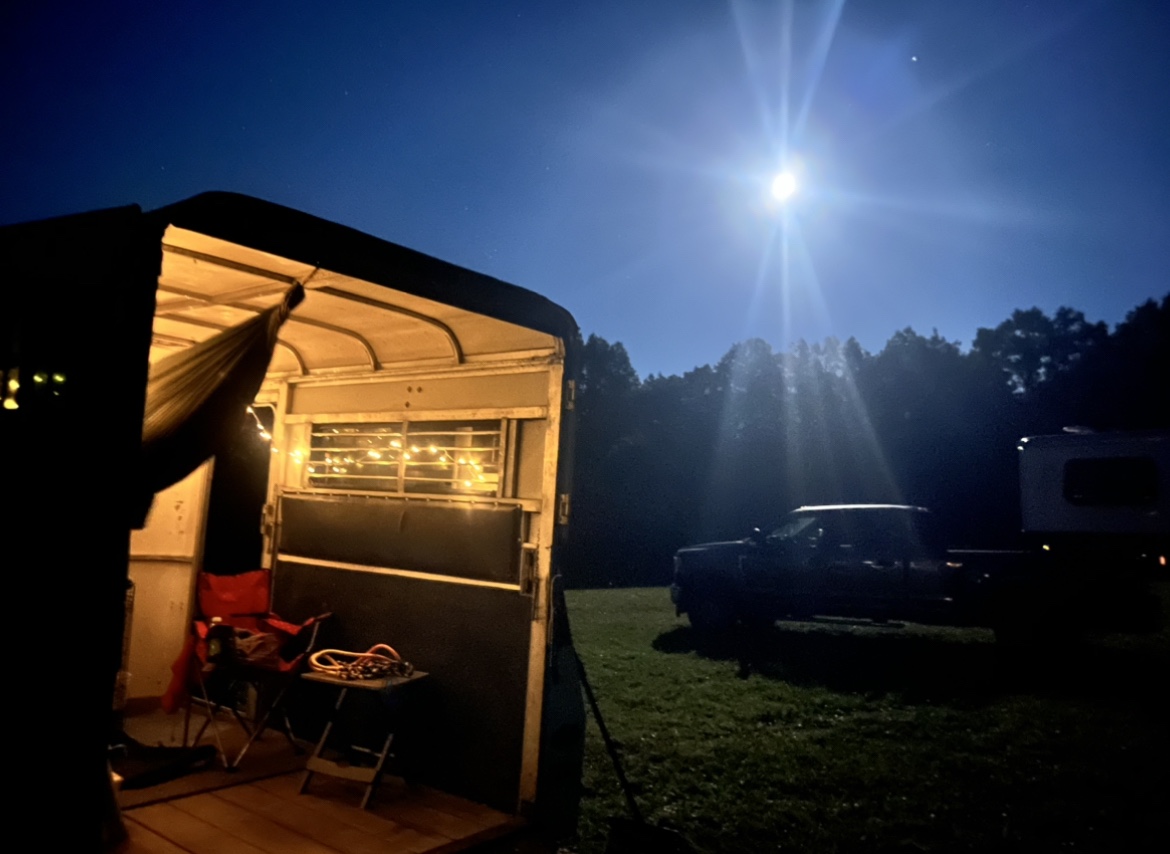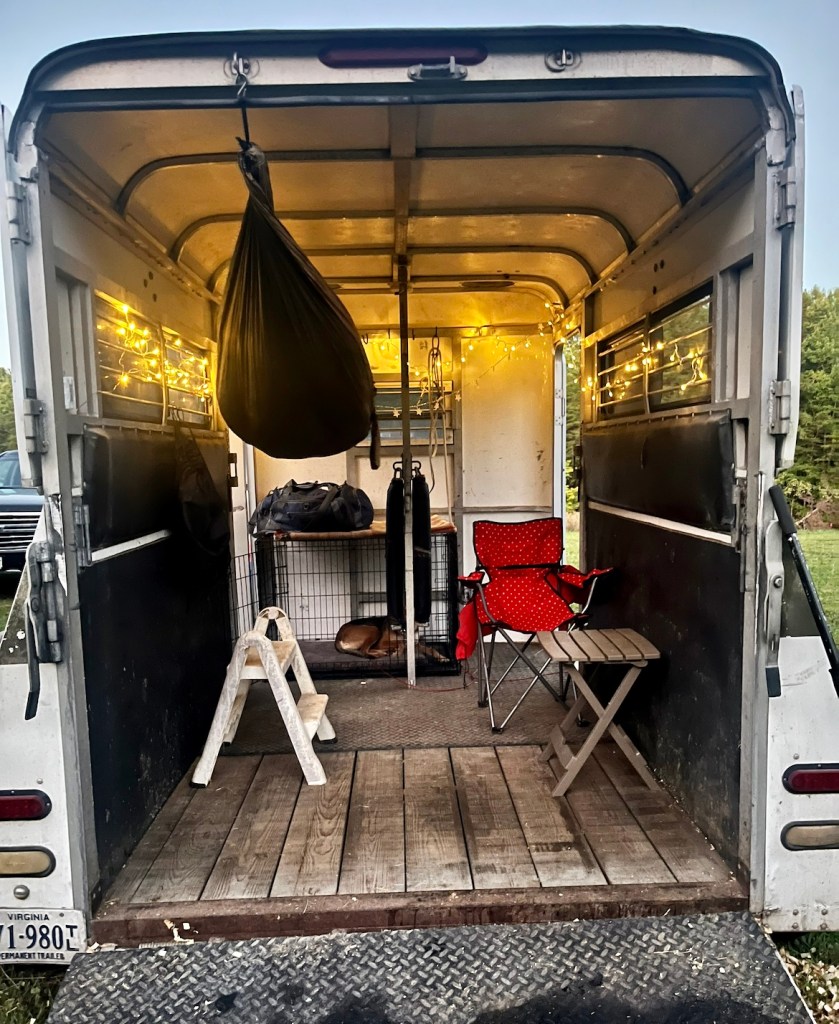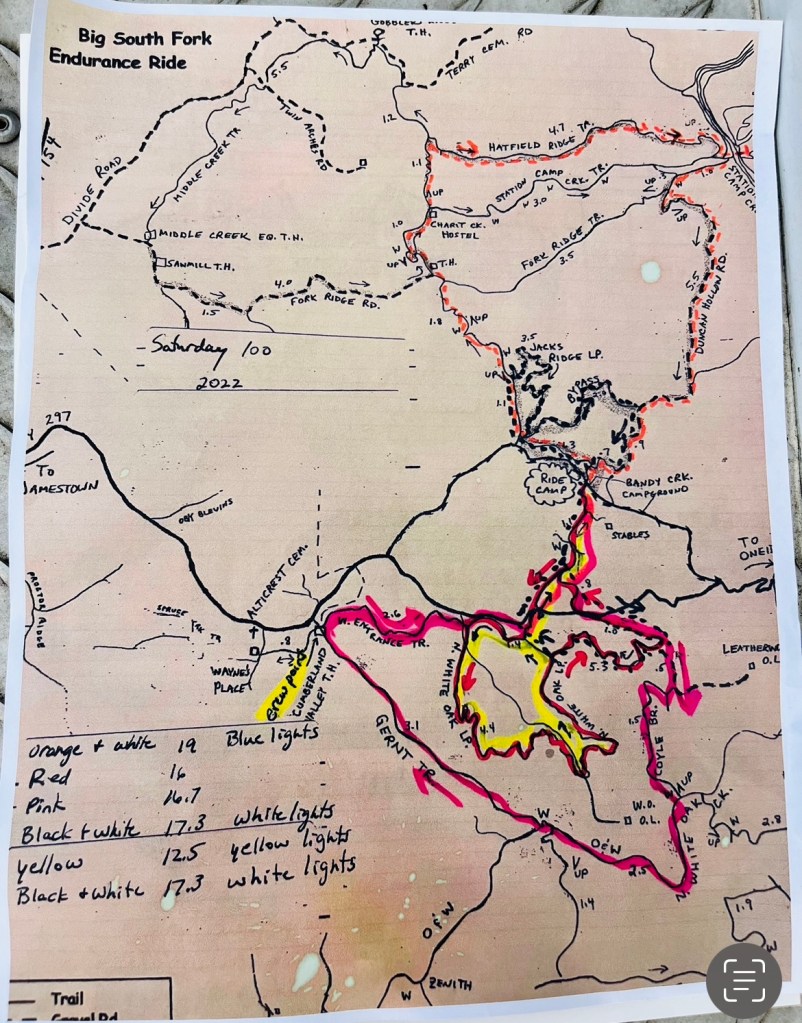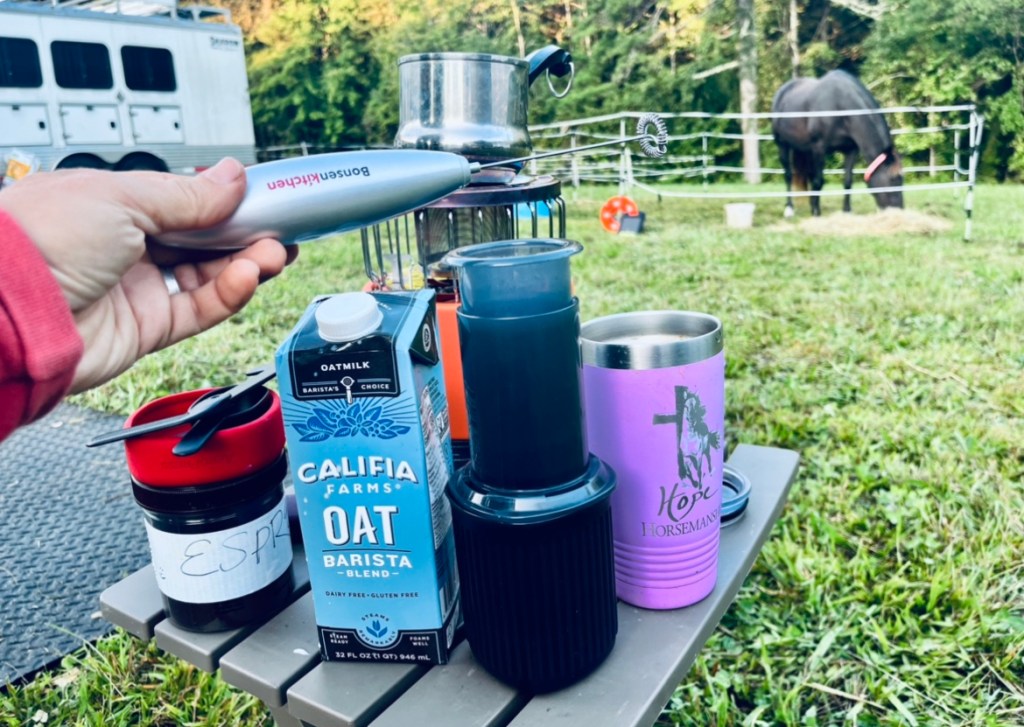I have tried to write this update multiple times and seem to make a tangled mess out of it every time. Apparently it takes endurance to write about endurance!
If you don’t follow the Hope Horsemanship [HH] blog, I encourage you to read my experience of spending a week with Harry Whitney in The Motions of Emotion. Hope Horsemanship is my bigger umbrella horsemanship entity (a coaching business, website, blog and more) and I cover general horsemanship topics there broader than our endurance experiences. HopeHorsemanship.com
In my previous attempts to impart the massive download I picked up in California as I watched Harry work as a digestible blog relatable to the journey of an endurance horse and human, I ended up with the material for a book or two. The entire thing got unwieldy each time. So I am going to try again here.

Yesterday as I rode the mountain road between Poor Farm Recreation area and Hidden Valley, the sun shone on the warm first day of Spring and I found we had settled into sitting a sweet balanced rhythmical trot. It wasn’t particularly fast. It wasn’t at all fancy. It was true.
I remember the first time Mike told me about an issue with a bike where the wheels weren’t true. This terminology stunned me. Here is a description:
When a bicycle wheel is true, it means that the wheel is perfectly straight and when the wheel spins it has no wobbles, lateral bends or rubbing against the brake pads. This is important because a true wheel ensures a smooth and efficient ride. It also prevents unnecessary wear and tear on the bike’s components, such as the brakes, and reduces the likelihood of accidents.
As I trotted along the mountain road perfectly balanced to all four corners, in a steady rhythm, with my horse relaxed and soft throughout her mind and body with me in (a rare and unusual) effortless sync, that word rang in my mind… True. If my horse is true I have a smooth and efficient ride. It prevents unnecessary wear and tear and reduces the likelihood of accidents.
Wow. How true this is.
When the horse’s mind is separated from her body trouble reigns.
My core takeaway from the clinic with Harry Whitney is that when the horse’s mind is separated from her body trouble reigns. The world is full of troubled horses. Horses who carry to some extent anxiety, tension, brace, imbalance, confusion, fear, and pain. Most of us recognize that horses seek peace and security above all else- yet regardless of much we love them, we are the biggest peace destroyers in their worlds. Somehow in their boundless generosity, not only do they usually not kill us (ever wonder why horse sports are among the most dangerous?), but they continue to try to work with us even in the face of all those things.
That is a miracle.
Harry’s approach is not unique because he considers the horse’s mind, it’s unique because he begins with the horse’s mind. He won’t do anything to educate or train a horse physically without first getting the horse’s mind present, relaxed and basically at peace (if not entirely, at least in great measure). He does not tap into the horse’s flight instinct to do so. He doesn’t chase horses around with direct pressure. He draws them in and asks them to let go of that thought that you might rather be somewhere else and doing something else. He assures the horse this mental escape or shutting down will not bring you peace; so give me a chance. Connect with me and be present and you’ll see this is where you find peace, right here, right now and with me. I will help you FEEL better, now.
Horse after horse, and human after human, as he walked through this process it worked. Getting this right to start meant that everything after had meaning and was done in a present and relaxed state of mind. There was connection. Horses are herd creatures and they crave connection. Humans are created for relationship and need connection to thrive. If we will make the changes, make the effort, this actually does work. Anyone can improve here and it will change things significantly for the better.

It was like watching a masterful teacher with a student who was dreaming of playing soccer with friends while the math lesson was supposed to be taking place. No learning will be successful until the student brings his mind back to the room and the teacher. Everything done before that happens is wasted. A mediocre teacher uses threats and punishment to bring back the student’s mind. There can be learning now, but the student is only grudgingly engaged and still pining for release in his mind and heart. But a creative and effective teacher invites the student and gives them something worth being present for. A brilliant teacher engages the student to want to learn, a teacher like this, the student learns over time, deeply cares for the student and connects with them, knows them, and honors their learning process as well. Harry Whitney is a brilliant teacher with that kind of heart.
Someone could teach you a myriad of ways to get a horse to walk a decent circle. You could learn where to put your leg, hands, shoulders, seat and eyes, but if the horse’s mind isn’t presently doing the circle (in the direction you are intending) then it will still be robotic with awkward inflexible curves in the body. There will be imbalance and tension no matter how expertly you steer the horse around. As my eyes have been opened more to this I am amazed at what horses can do with their body that they are not committed to in the mind!
However, if you develop a way to connect and communicate with your horse, using these tools find a way to suggest to the horse to walk a circle and the horse decides it wants to do it– you’ll have grace, flexibility, a bend to die for and balance on all four corners. And you don’t have to be an expert dressage rider because your horse is able to walk in a beautiful circle… if she sets her mind to doing so.
This is true.
There are rides when I have to nag my horse to want to continue off into the wilderness when she would rather go back and relax with her friends. Riding almost exclusively alone can be it’s own challenge though it also comes with a lot of treasure. The days she is unconvinced of my plan I can force her to cooperate, but it isn’t going to be the relaxed, balanced, rhythmic, floating ride when she has decided to stay with me mentally and willingly hit the road together. When I ask her can you be here with me, but have a nice forward thought? and we get this right, it all comes into balance and floats effortlessly. Because the mind is leading the way.

The opposite issue is the horse that consistently wants to be somewhere else. You don’t have to nag that horse to go, because that horse wants to be anywhere else and they are difficult to stop or influence. It takes a lot of force and leverage tools to keep that horse in check. This horse cannot stand still. The horse’s mind is somewhere else and it’s working at every angle to get it’s body reconnected- but only if it can do so in the place it already sent it’s mind. This means they aren’t moving in balance and relaxation, free from tension. They aren’t soft in mind or body and tend to rush around (hurry = worry), they can’t stand still to mount, can’t be behind another horse, and brace against the reins with a powerful neck and head no matter how “strong” the bit and tack are. If you ride these horses you get sore shoulders and neck, sometimes blisters on your hands. These horses are tough to influence and take a heavy hand to control. If we put enough force on them to comply they will often go “inside” and they’ll get the job done but they aren’t fully present… and these horses when something DOES bring them back, usually with a start… can be explosive. These are often the horses people say do things “out of nowhere”… it makes sense because that where their mind was… not present. Nowhere, deep inside where their last vestige of peace and safety was. Considering how many horses are functioning in some level of discomfort or pain, dulling out internally can be a way of survival for them.
What I’ve been enjoying with the horses I’m working with today at Hope Horsemanship is the softness that comes when the mind is relaxed and clear. The amount of subtle influence I have to shift weight without moving a hoof, to ask for a little lift here or a slight adjustment there to line up a little more in balance through a curve is so easy. The feel of the horse is responsive, present, and loose. The horse who is braced (worried, anxious, stressed, confused, distracted…) can’t adjust and tweak fine tuned movements.
This horse has a mind that is not present. This horse is not smooth and efficient. This horse is not true. This horse is more likely to have chronic injury over time or be involved in an accident.

Why this matters to any endurance rider is when the horse is not soft in the mind and relaxed in the work it is moving with brace somewhere in its body and tension. Tension in motion overtime time means break down and damage. More vet visits, more injections to joints, more tendon problems, more muscle breakdown, atrophy, tightness, more chiropractor adjustments, more osteopath work, shorter careers than necessary, and pain over time for the horse. Pain they often hide from us as much as they are able because they are prey animals who don’t show weakness if they can help it, and because they are often told to “quit it” when they try to communicate something isn’t working for them.
- You’re acting stupid.
- That horse just needs to know who’s in charge.
- I know just the [insert piece of tack here] to solve that for you.
- He’s just lazy.
Too often we do all we can to get them to shove that truth somewhere the sun don’t shine. I have done this in ignorance, and willingly in other seasons of my life. Sometimes the truth is just too painful to deal with.
Yet, as I’ve chased down the passion to learn more and to grow in the ability to do this horse thing better I have often found myself overwhelmed with all I don’t know, the confusion I can still cause because my own signals can be awkward. The years of riding it takes to improve, the patience and time before things change, but as I watched the sessions with Harry something new bubbled up for me. This is something that both takes a lifetime AND is immediately available to anyone.
Possibly the overarching quality I saw with Harry Whitney: he is a truth seeker. He wants to know how the horse is feeling, what they are thinking, and then he wants to connect and show that horse they can trust him. The horse will feel better when it lets go of the anxious thoughts and connects in with him. Harry doesn’t have a goal to get anything in particular done with a horse in any particular time (though he does a whole lot of great things and with him they happen in short order) but his true goal is to help the horse feel better.
Anyone can make the decision to want the truth. We fear the truth because it seems ugly at first. We want the sugar coating and the best case scenario, we want to know that because we love our horses (I don’t know anyone with a horse personally who doesn’t love their horse) that we aren’t capable of damaging them. We love good training and helpful tack pieces that fix deeper rooted issues with a surface solution- because these things allow us to see what we hope to see. And yet the truth sets us free, and sets our horses free. If we get honest with ourselves and listen to their version with clear eyes, ears and hearts, we immediately shift into a new more powerful place together.

Simply shifting awareness changes everything- and then we begin to grow in the ability to engage honestly. Immediately as we are willing and able to change our own internal drivers to truth seeking and integrity toward the horse, we can start becoming a safe and trusted place for them to come engage, connect and be present with. Then there is a lifetime of layers available. The good news is to make a massive difference in your horse’s mental-physical-emotional state and get on the fast track to a more powerful animal who connects to you and partners with you by choice and not by force… you do no have to be a level ten [insert horse training method here] instructor, you don’t have to have many years of following [insert master famous horseman here] around, and you can do this without fancy equipment or a small fortune. This is the great equalizer of the horse community at large: the truth.
I don’t know how Khaleesi will do this season, but I look at the rides we’ll attend as tests. They will show me truth. Will the mental-emotional-physical work we are doing together stand up to the call of event days? I find myself caring less and less about the finish line as I do about integrity. Where are the strengths and where are the weaknesses? I am not afraid of what I’ll find. Because the finish line, mileage stats, and success according to human standards is not interesting to me anymore. Humans are fickle. We are a grand mixture of agendas and egos and weakness and strength, pride and love and wounds and courage. Horses are generally a gift in their simplicity. They are good at truth telling but only if we come to them seeking honestly. Today, more than a record that humans can applaud, what I want is integrity. Truth.
I have seen people, myself, others I’ve watched around me, we all can get away with a lot for a time, but we do eventually reap what we sow. Sadly, it usually happens so gradually that if we aren’t sowing the right things and watching the ground, sometimes pulling back some dirt to make sure… at harvest time it is too late to reseed.
Only being open to seeing the truth even when it’s hard to face, will bring me a horse that is integrated, relaxed, not running around in race brain, or dragging back because she doesn’t want to go with me. I don’t want to fight though I’m willing to lead and invite. I want my horse to know that her feeling good, feeling strong, and feeling powerful, and having a voice I honor is more important than my mileage record and the finish line. I hope what I’m doing every day even when I’m working around the barn translates to what we do at an event. I am aware that process will be a longer road, but the result of that will be a partner for life, a long career, and considering we spend so much time alone together… a true friend.



